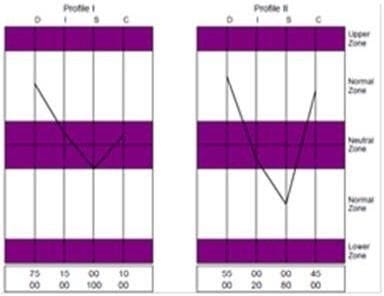StressWritten on the 20 November 2015
Bill (not his real name) is a highly skilled motor engineer. He has spent many years tutoring at a well known technical institute and is widely respected by his peers.
Bill and the CEO met after three months to review the branch's performance. Unfortunately, despite a lot of hard work and very long hours, Bill had been unable to meet sales targets and the atmosphere at the branch had become uncomfortable with a basic breakdown in communication between management and staff.
The first step the consultant took was to obtain Behavioural Reports for the entire staff of thirty-two people and the CEO as well. Bill's Profiles are shown above and the very significant movement from his natural behavioural style to his adjusted style is immediately obvious. Several of the staff's Profiles exhibited stress, insecurity and frustration.
The CEO was therefore left with the clear impression that he was a direct, decisive, competitive individual quite capable of managing a group of servicemen and salesmen. He also felt that he would have no difficulty in communicating with him. It will be noted that the CEO shared Bill's C traits but his D characteristics were much stronger than Bill's. |





